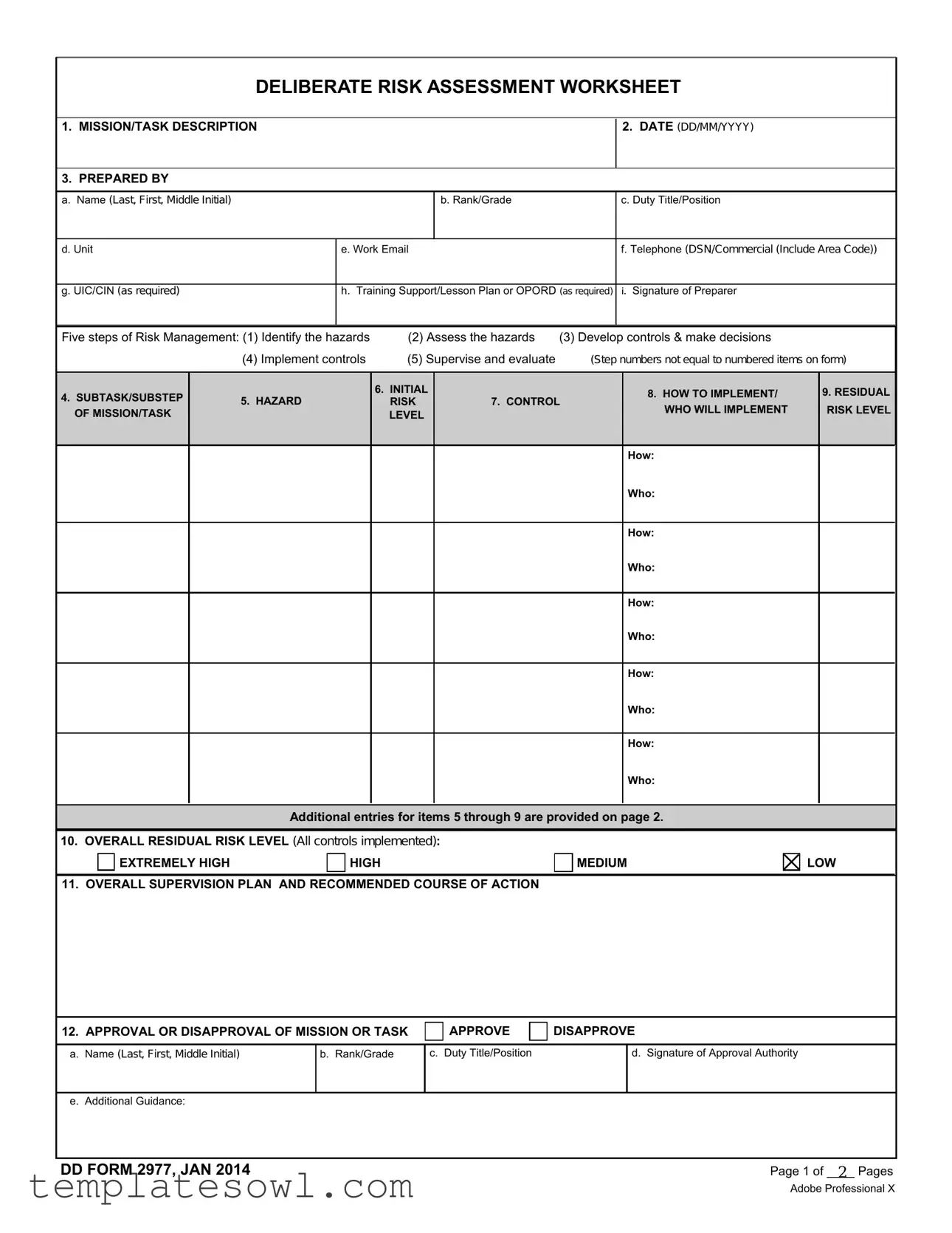What is the Army Risk form?
The Army Risk form, officially known as the Deliberate Risk Assessment Worksheet (DD Form 2977), is a critical tool used by military personnel to assess risks associated with specific missions or tasks. It guides users through a structured approach to identify potential hazards, evaluate risks, and implement controls to mitigate those risks. The form is designed to enhance mission success by ensuring that safety considerations are integrated into planning and execution.
Who is responsible for preparing the Army Risk form?
The Army Risk form must be prepared by an individual who is knowledgeable about the mission or task being assessed. This person provides their name, rank, duty title, unit, and contact information in the designated sections of the form. The preparer is responsible for accurately identifying hazards, assessing risk levels, and recommending controls that will ensure the safety of all personnel involved.
What are the steps involved in risk management as outlined in the Army Risk form?
The risk management process consists of five key steps: (1) Identify the hazards, (2) Assess the hazards, (3) Develop controls and make decisions, (4) Implement controls, and (5) Supervise and evaluate. Each step plays a vital role in systematically addressing risks associated with military operations, allowing for a comprehensive understanding and approach to safety.
How is the residual risk level determined?
The residual risk level is determined after implementing the identified controls intended to mitigate hazards. The preparer evaluates the remaining risk by considering the probability and severity of each hazard using the risk assessment matrix. The resultant risk level is then recorded on the form, allowing decision-makers to understand the current risk exposure.
What factors are considered when identifying a hazard?
When identifying a hazard, several factors are taken into account, such as the specific subtasks involved in the mission, environmental conditions, equipment used, and potential human factors. It is essential for the preparer to consider how these factors can interact to create safety risks. Each identified hazard must be linked to the relevant subtasks on the form.
What happens if the overall risk assessment indicates a high level of risk?
If the overall risk assessment identifies a high or extremely high risk level, it may lead to the disapproval of the mission or task. The approval authority must then assess the risks and the effectiveness of the proposed controls before making a decision. Operations may be prohibited until proper adjustments are made or new controls are implemented.
How often should risk assessments be reviewed?
Risk assessments should be reviewed regularly throughout the duration of the mission or activity. Continuous oversight allows for adjustments based on new hazards or changes in conditions. If the residual risk level increases beyond what has been previously approved, operations must be paused until the appropriate authority re-evaluates and approves the continued execution.
What type of feedback can be provided after completing the risk assessment?
After completing the risk assessment, feedback should focus on the effectiveness of the controls implemented and their impact on mission success. Preparers should document lessons learned and recommend either improved controls or alternative actions based on these insights. This feedback is crucial for refining future risk assessments and enhancing overall safety protocols.
Can the Army Risk form be modified for additional entries?
Yes, the Army Risk form can be modified to accommodate additional entries if necessary. The continuance pages may be reproduced as needed to ensure that all subtasks and substeps are adequately assessed. If the extra space is not fully utilized, a note indicating "NOTHING FOLLOWS" should be written in the first unused row to maintain clarity and professionalism in documentation.



